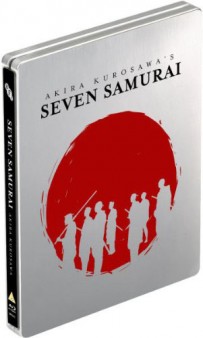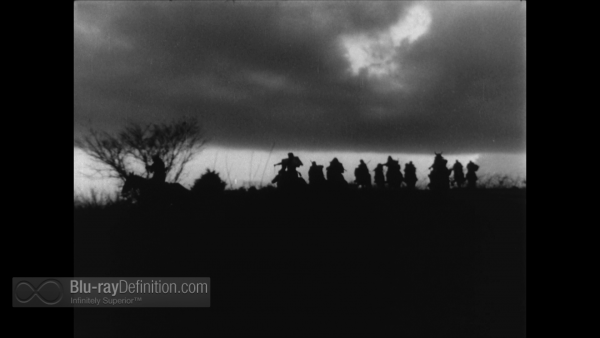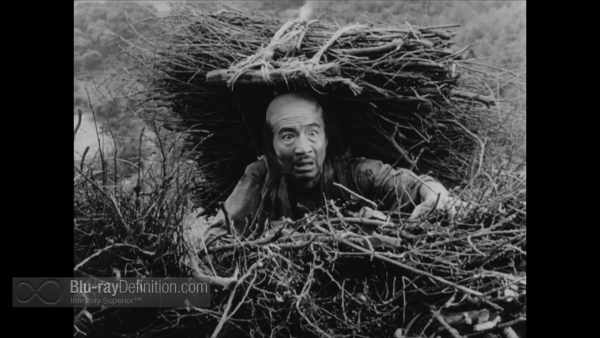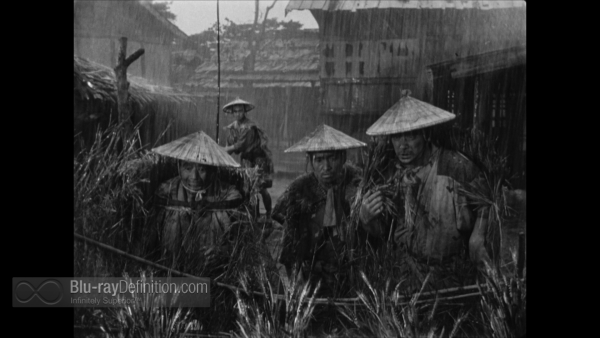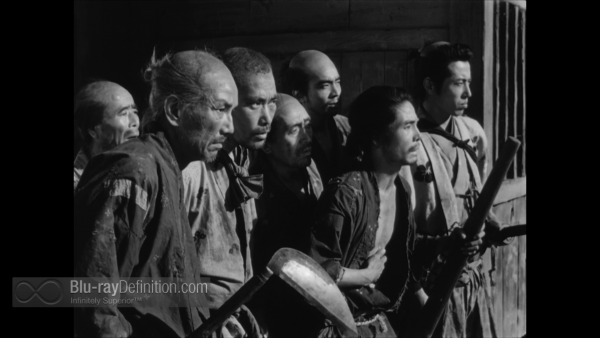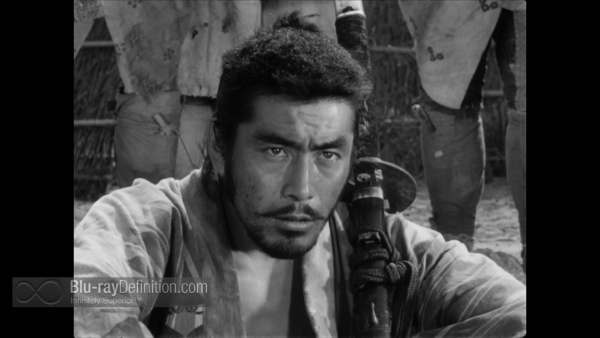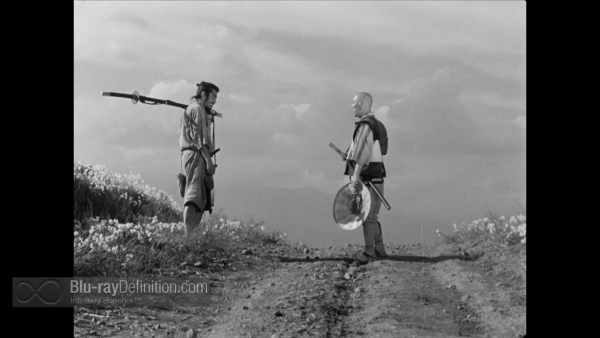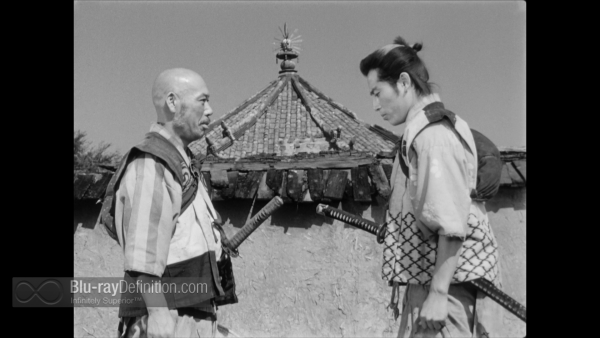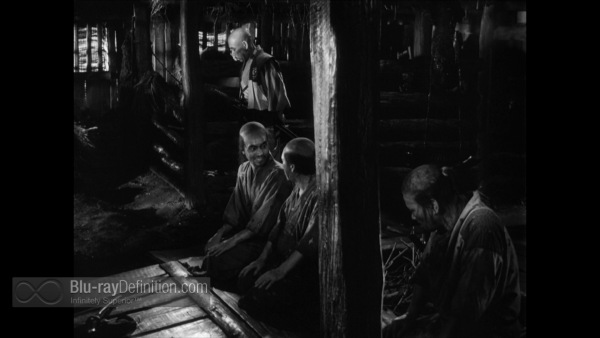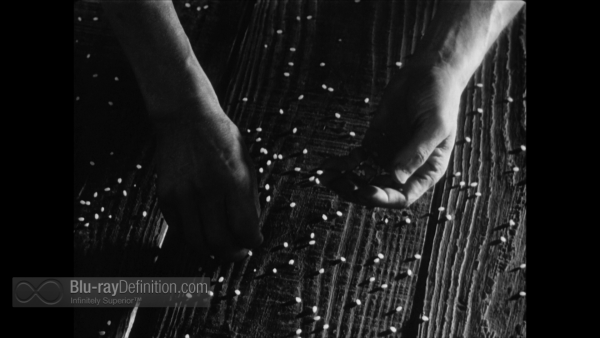– –
The Film
[Rating:5/5]
Kurosawa Akira’s 1954 film Seven Samurai was to go on to become the most successful and most acclaimed film of his career. It heralded a new era in his filmmaking career, a new direction, a new level of comfort and experimentation in his filmmaking. It marked his first use of telephoto lenses to flatten the action and draw viewers closer into the film, and its nearly three-and-a-half-hour length left no doubt about his mastery over his art.
The slow, methodical epic samurai drama focuses on a provincial farming village harassed by a band of marauding bandits who, on the suggestion of the village elder, decide to hire seven masterless samurai, or ronin, to help defend them. They have nothing to offer in return for the samurai’s services other than shelter and one bowl of rice a day.
Upon finding the eponymous seven samurai, the warriors not only come in to defend the village and train the villagers to defend themselves, but they change how the villagers think about and see themselves.
Kurosawa’s film takes place over the span of an entire year, and it took nearly as long to create. Six weeks of script writing, three months of pre-production and 148 days of shooting — it shows in the careful way in which the action unfolds in Seven Samurai. Not a moment is wasted, not a line of dialogue out of place. An entire hour goes by before the eponymous warriors of the film are even hired. With most directors, this would seem tiresome and self-indulgent, but with Kurosawa and Seven Samurai, it is all in the pursuit of perfection.
Seven Samurai‘s influence has been far-reaching in the world of entertainment. In 1960, the film was remade as the Hollywood western The Magnificent Seven. There was even an anime series based on the film, Samurai 7, released in the US by FUNimation.
Video Quality
[Rating:3/5]
The booklet says that Seven Samurai was ‘restored by Toho in Japan using an original 35mm fine grain master positive and delivered to the BFI. Further digital restoration was undertaken to remove further instances of film damage and warping’
The film appears in its original 1.37:1 aspect ratio in an AVC/MPEG-4 1080p/24 (24Hz) encodement on Blu-ray from the BFI. While it does look cleaner than the previous U.S. Blu-ray release of Seven Samurai from the Criterion Collection, it also looks a lot smoother, lacking a lot of the texture of the former. It also seems a little tweaked in the white levels so that it loses some of the solid blacks, making it seems brighter and little more washed out in the shadows and flatter overall.
Audio Quality
[Rating:2.5/5]
There’s no mention made by the BFI of the source of the original monaural Japanese soundtrack, which appears on this Blu-ray release in LPCM 1.0 (48kHz/16-bit). The sound is very limited in range, boxy, dull, and little muffled. There have been better sounding releases from the same era, so it can’t all be down to the age of the material, but something to do with the source.
Supplemental Materials
[Rating:3/5]
The 45-minute featurette with Tony Rayns on Kurosawa is an interesting watch and the insightful booklet is worth reading from cover to cover.
The supplements:
- Play with or without the original intermission
- The Art of Akira Kurosawa (1.78:1; 1080p/24; 00:48:46) – Asian cinema expert Tony Rayns discusses Kurosawa’s career and influence
- Original Japanese Theatrical Trailer (1.37:1; 1080p/24; 00:04:10)
- 16-page booklet containing an essay and biographies by Philip Kemp, original review, cast and credits, information on the transfer
- SteelBook Packaging
The Definitive Word
Overall:
[Rating:3.5/5]
They rarely make them like this anymore and you’d be hard pressed to come by a film of this length as easy to sit through as Seven Samurai. The brilliance of the film is in the seamless blending of history, philosophy, action, social commentary, and Kurosawa’s filmmaking prowess. Highly Recommended.


